Administering Botox To Male Patients
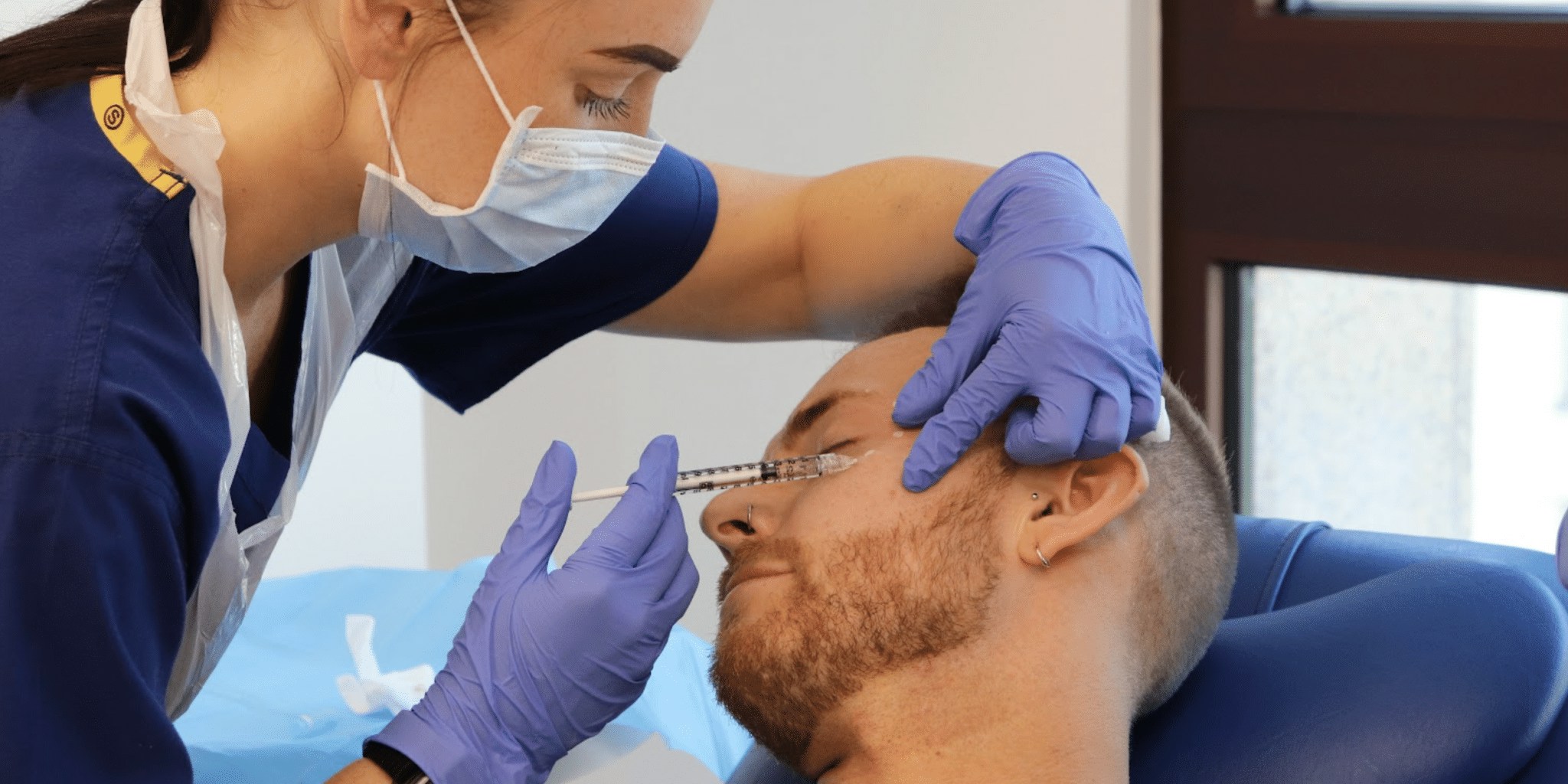
Whilst toxin adverts typically feature 20-something women, it’s important for injectors to understand what’s involved in administering botox to male patients, too.
It’s becoming increasingly common for patients of all genders to seek injectable treatments. As such, aesthetics practitioners need to know how to treat male, female and gender non-conforming clients effectively. As, even though the treatments may be broadly similar – and every patient should be consulted and treated as an individual – there are some nuances when it comes to treating different genders.
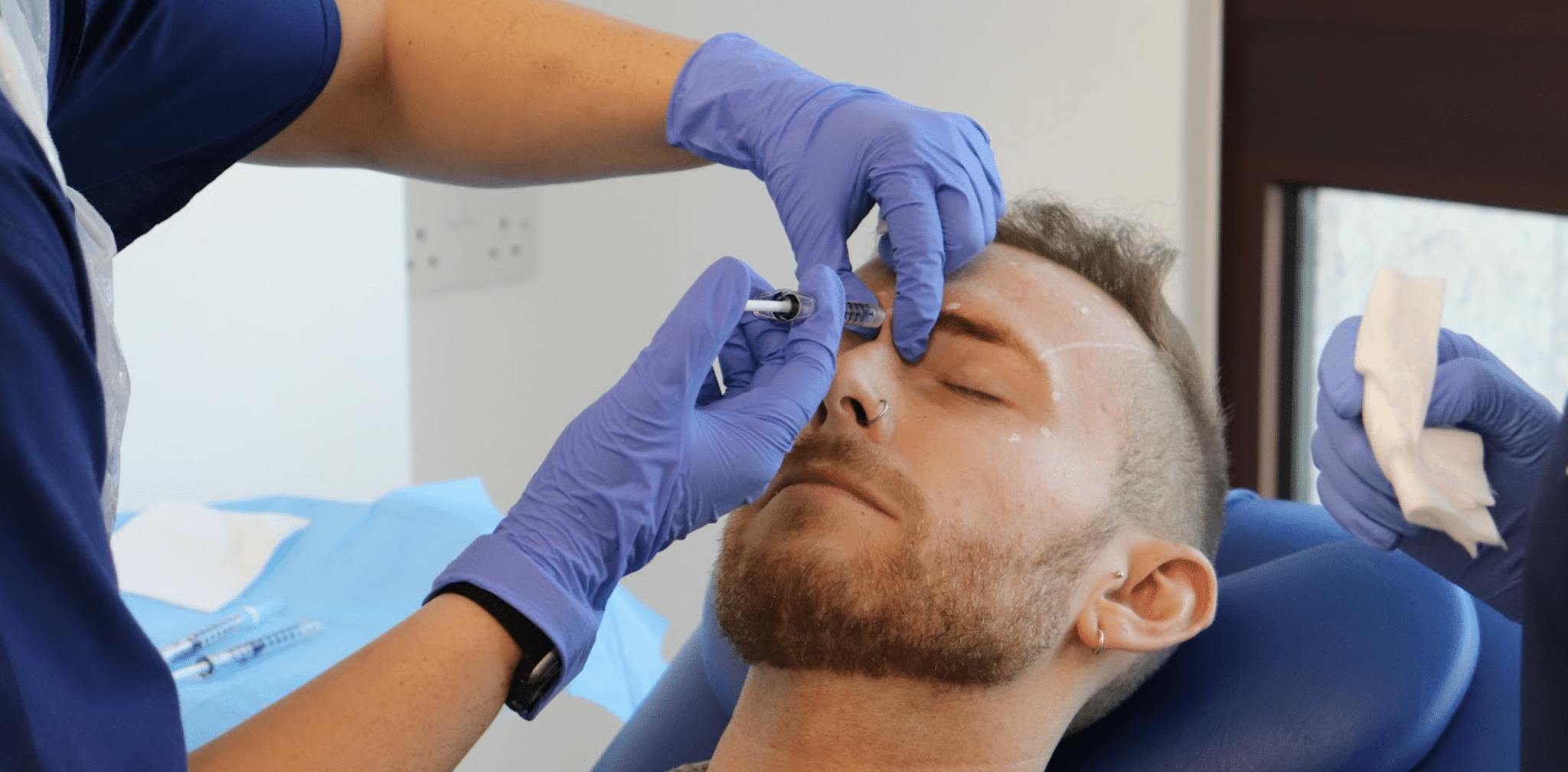
We spoke to aesthetics specialist, Shantel Noble, RGN, to get her top tips on treating male injectables patients. She is an experienced cosmetic nurse prescriber and a Harley Academy clinical trainer in addition to running her own practice.
ADVICE ON INJECTING MALE TOXIN PATIENTS
In this two-part article, Shantel explains what new injectors need to know about treating men with dermal fillers and, to start, she gives her tips on “Brotox” aka administering botox to male patients...
Male skin is thicker and difficult to inject! Any technique or needle advice?
From experience, I have often found you can use the same needle gauge for both male and females botulinum toxin patients.
Sometimes men’s skin can feel thicker, so slightly more pressure may be required to break the skin barrier. Just ensure you maintain the correct depth for your injections.
If you have any patients who you find have thicker skin, you can opt to use a 30g needle instead of a 32g TSK Invisible Needle. These are the needles we teach you to use at Harley Academy.
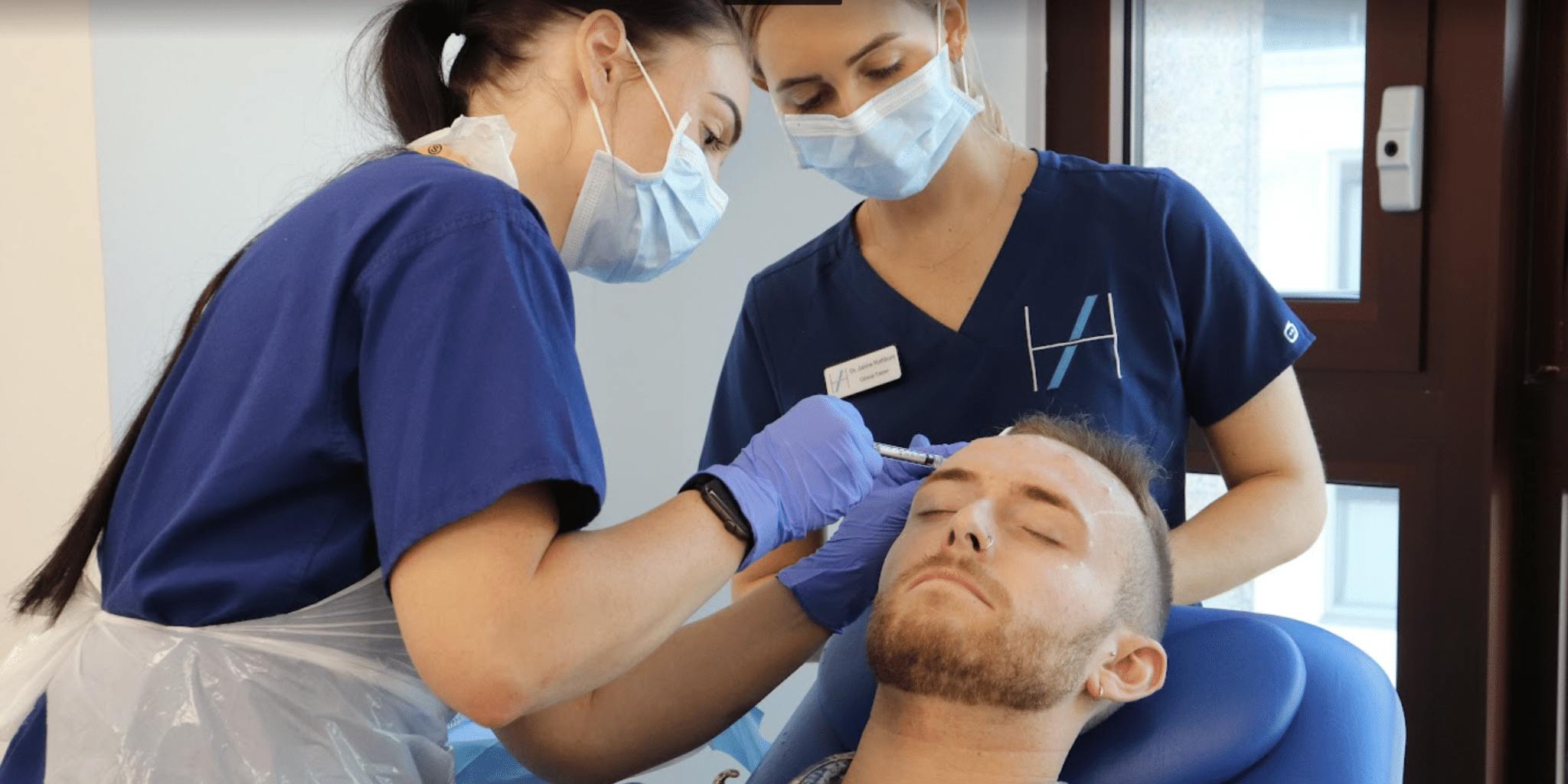
What’s the difference in approach when administering botox to male patients?
Males typically have stronger facial muscles so may require larger dosing. If it is their first treatment, stick to licensed dosing and adjust at 2-4 weeks as usual. It’s, of course, important to ascertain the treatment outcome your patients are wanting.
Doses required to obtain a natural Botox result in men
If they want to maintain a natural result, opt for licensed dosing. For example, I use the following doses of Botox to achieve a natural looking outcome:
– Glabella 20 units
– Frontalis 10-20 units
– Orbicularis oculi 24 units.
Sometimes you may require even less when treating areas such as the orbicularis oculi, which you could reduce to 6 I.U per side. This is because it can be deemed undesirable for men to have a “frozen” appearance around the eyes; this may feminise their perceived appearance. Crow’s feet are considered societally to be “distinguished” in the older male, which is generally not the case for women...
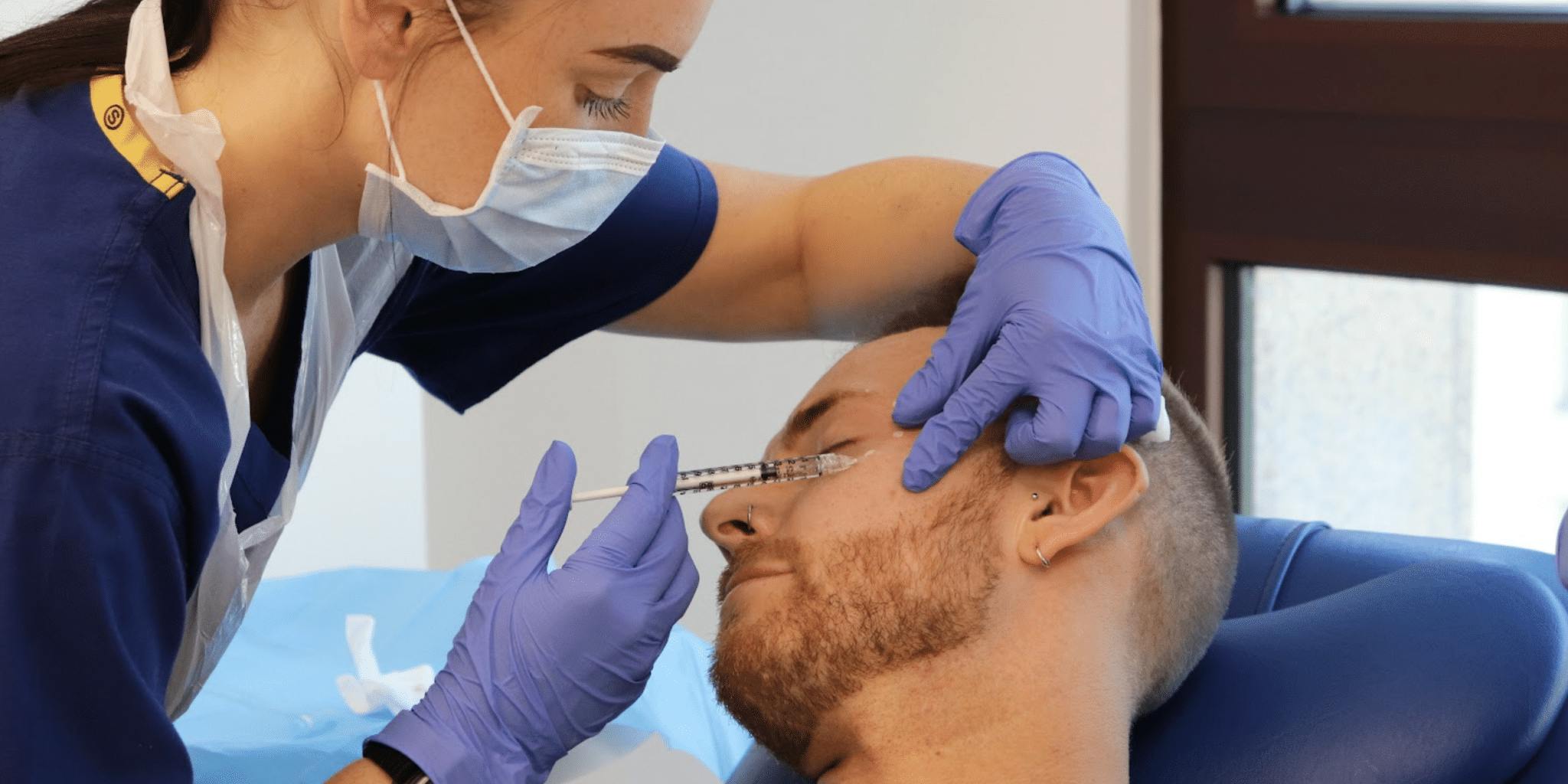
Botox dosing for male patients who want a “frozen” look
Do consider that a “frozen” look can appear unnatural. Shiny, movement-free foreheads are a tell tale sign of toxin treatment.
If my male patients want to eradicate as much movement as possible, I will increase from licensed dosing in areas, for example:
The Glabella Complex, which I would treat with 24 units instead of 20 units:
– Procerus, 4 units
– Medial corrugators, 6 units
– Lateral corrugators, 4 units.
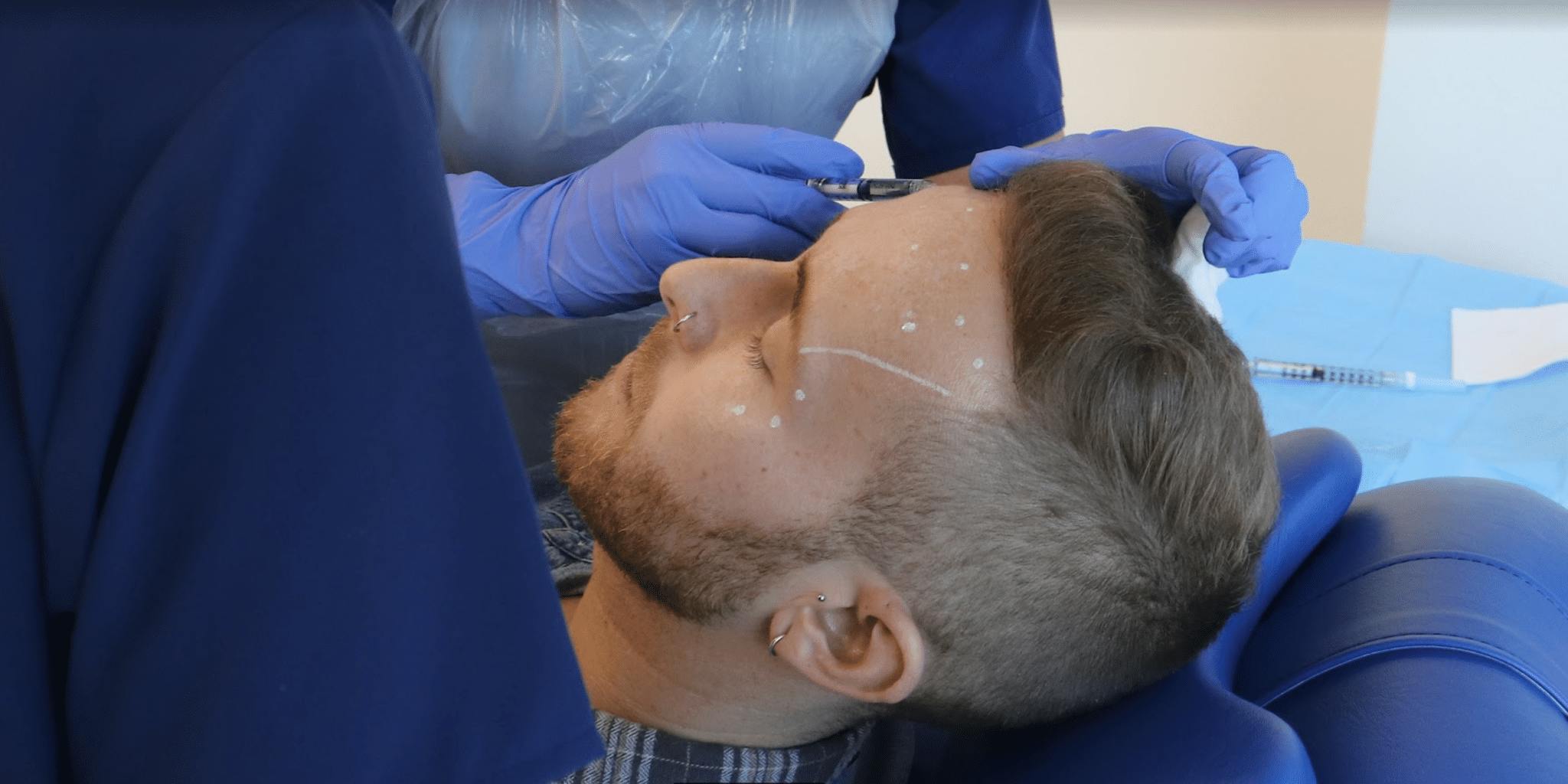
Consider your patient’s hairline when injecting the frontalis
When treating men across their frontalis, my injection points are often in a horizontal line to maintain a straight brow. An M-shaped pattern would arch the brow and feminise their appearance.
I place my injections exactly 2cm from the orbital rim. Sometimes two rows in a similar format, spreading the total dosage, are required, depending upon the patient’s hairline placement. Injection technique and depth remains the same.
Consider treating receding hairlines too – lines will appear more prominent here, particularly with lessened muscle activity in lower regions if left untreated.
Remember male patients are also at risk of brow ptosis. However, this may be more acceptable aesthetically, as heavy brows are traditionally considered a more masculine feature.
Which botulinum toxin product is best suited for male patients?
Product selection is subjective; there is no evidence to suggest either of the main UK market botulinum toxins are stronger or last longer than the other. At Harley Academy, we use Allergan’s Botox and train all our students using this toxin on each of our Botox and Dermal Filler courses.
My top tips for administering botox to male patients
– Increase the glabella dose
– Do not feminise unless that is the patient’s desired outcome; consider under-dosing where appropriate
– Maintain a linear formation with injection points when treating the frontalis.
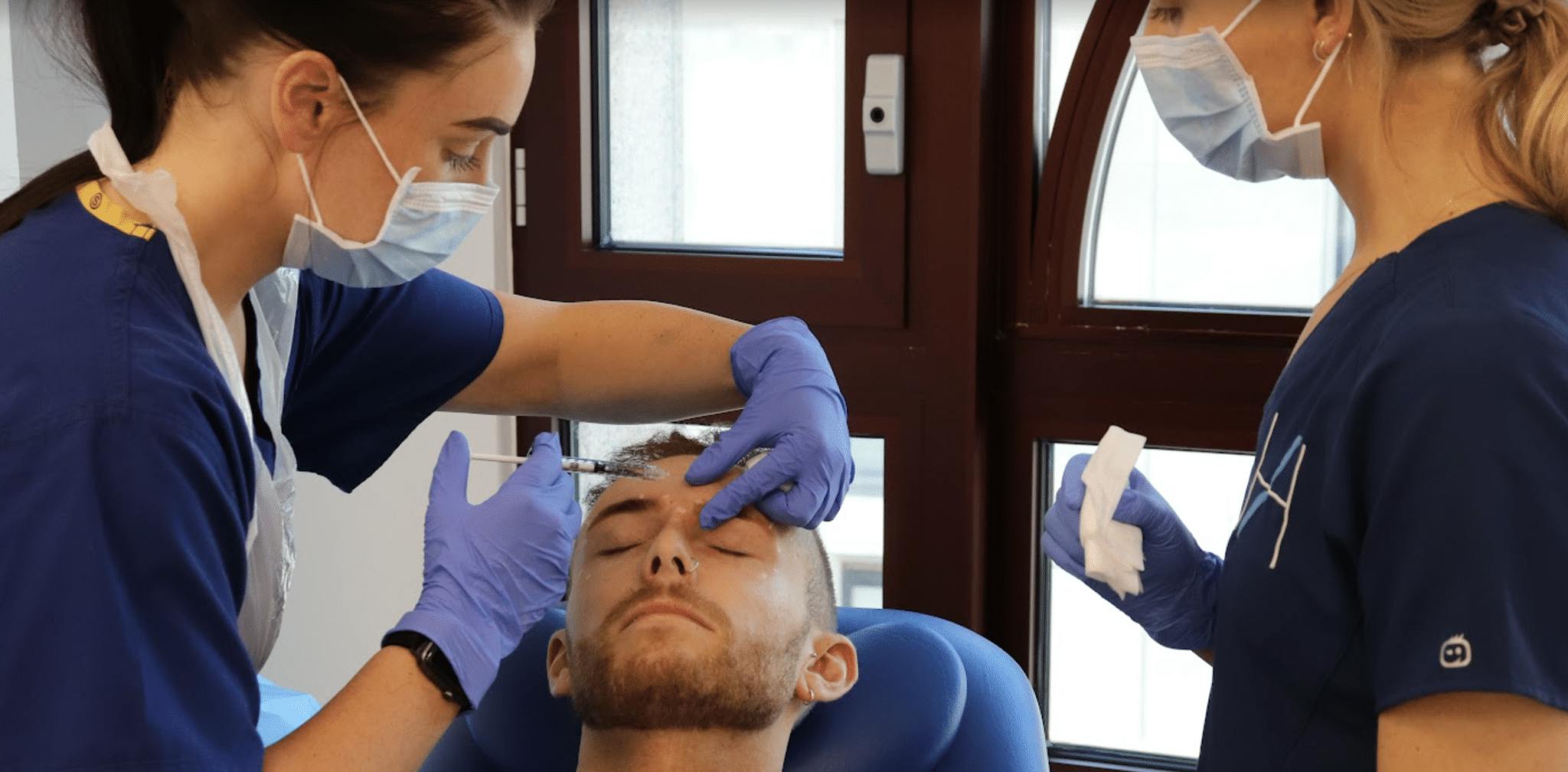
BOTOX TRAINING FOR HEALTHCARE PROFESSIONALS
At Harley Academy we offer a range of training pathways for doctors, dentists, nurses and midwives looking to get into aesthetic medicine, or formalise their training in the sector.
We offer a number of courses suitable for injectors of all levels, from complete beginners through to experienced practitioners. You can find out more about everything from our Foundation Training to our industry-leading Level 7 Diploma in Botox and Dermal Fillers on the Botox and Dermal Filler Training section of our website.
However, for personalised information or to discuss our various training and payment options, the best thing to do is schedule a call with Deneal Basi, our head of student recruitment. Let Deneal know what you’re looking for and he can discuss your options with you and set you off on the path to aesthetic excellence that starts by becoming #HarleyTrained.
All information correct at time of publication
Download our full prospectus
Browse all our injectables, dermal fillers and cosmetic dermatology courses in one document
By submitting this form, you agree to receive marketing about our products, events, promotions and exclusive content. Consent is not a condition of purchase, and no purchase is necessary. Message frequency varies. View our Privacy Policy and Terms & Conditions
Attend our FREE open evening
If you're not sure which course is right for you, let us help
Join us online or in-person at our free open evening to learn more
Our Partners














STAY INFORMED
Sign up to receive industry news, careers advice, special offers and information on Harley Academy courses and services

